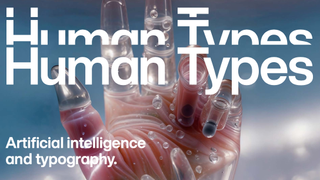UX consultant slams 'teflon-coated' designers
People in the web industry should fight for more accountability, not less
User experience consultant Harry Brignull has railed at web industry folk who pass the buck and don't fight for more accountability in projects.
In a blog post titled, 'Are you in a teflon-coated UX role?', he argued that taking such a position may feel safe, but in reality it means not improving your skills. Additionally, it contributes to the poor reputation UX people have for “delivering formulaic rhetoric and not delivering the goods”.
Speaking to .net, Brignull said the problem is especially evident in large organisations with separate departments. He said, “These silos that have their own sense of responsibility, their own culture [and] their own layer of management that insulates them from the rest of the organisation”.
He added that people have a tendency to “concentrate on just their own piece of the puzzle, and quality leaks out between the cracks,” despite UX existing to “transcend all this stuff and facilitate change by looking at things from the users’ perspective”.
In reality, Brignull thought many UX designers “completely fail to do this. They look at things from the user’s perspective, then they just sit there and complain things are broken”. In part, Brignull blamed corporate culture: “If you’re newly hired into a big organisation and you realise there’s a fundamental problem with organisational structure that's preventing good design from happening, what do you do in that situation?”
Being accountable
Brignull noted that accountability doesn't rest with corporate structures and those working on projects should do more to make themselves accountable: “The thing about UX roles is they can end up doing all the fun stuff, with the UX designer existing in this 'happy fantasy world' at the beginning of a project. This is the ‘discovery phase’, where anything is possible. They’re free from the shackles of legacy technologies and technical debt. If something then goes wrong in the downstream workflow, it’s easy to think of it as someone else’s fault. That lovely ‘new project smell’ wears off, and the UX designer moves their attention on to the next thing. This is what I mean when I say that some UX designers end up being teflon coated. They get away with it.”
Brignull added that the problem extends beyond UX: “For example, a graphic designer could disavow themselves from responsibility by producing great PSDs and turning a blind eye to what happens downstream.”
Get the Creative Bloq Newsletter
Daily design news, reviews, how-tos and more, as picked by the editors.
User experience strategist Stephanie Troeth agreed: “This isn't just a UX-centric issue. It can exist in any role.” Troeth also sided with the teflon-coated problem being “as much attributed to organisational culture as it is to an individual,” and said it’s “not necessarily because the individuals are that way, but because there is often an overtly heavy emphasis on following a strict process over allowing/encouraging the individual team players to make decisions based on their own judgment, take ownership and therefore accountability." Sometimes, she said, situations like this must be fixed at leadership level.
Specifically regarding UX, Troeth explained there are ways to ensure someone is seen to be delivering value: “Every design decision we make should be measurable in one form or another. When you are a UX designer who is working at the beginning of the process, it is part of your responsibility to work with your colleagues to ensure that the vision is carried all the way through. This enables you to figure out if a design really worked or not, or if it could be improved. Conversely, it makes sense to be working with everyone that the project would touch in early stages so that they buy into the vision with you and help identify potentially hairy turning points."
She added that the more usual problem is that a product's value proposition is not well-defined and it therefore becomes difficult to figure out how and what to measure. Also, it's possible to measure the wrong thing: "When we think of ‘measure’ we often think ‘quantitative’, but qualitative measures are equally important—particularly on how people react to what we build.“
“At the most basic level of design, a good UX should be able to recognise when this situation arises and be able to help construct design solutions to test whether the value proposition is indeed what it should be, and how it can be successfully communicated and implemented,” she said.

Thank you for reading 5 articles this month* Join now for unlimited access
Enjoy your first month for just £1 / $1 / €1
*Read 5 free articles per month without a subscription

Join now for unlimited access
Try first month for just £1 / $1 / €1
The Creative Bloq team is made up of a group of design fans, and has changed and evolved since Creative Bloq began back in 2012. The current website team consists of eight full-time members of staff: Editor Georgia Coggan, Deputy Editor Rosie Hilder, Ecommerce Editor Beren Neale, Senior News Editor Daniel Piper, Editor, Digital Art and 3D Ian Dean, Tech Reviews Editor Erlingur Einarsson and Ecommerce Writer Beth Nicholls and Staff Writer Natalie Fear, as well as a roster of freelancers from around the world. The 3D World and ImagineFX magazine teams also pitch in, ensuring that content from 3D World and ImagineFX is represented on Creative Bloq.




